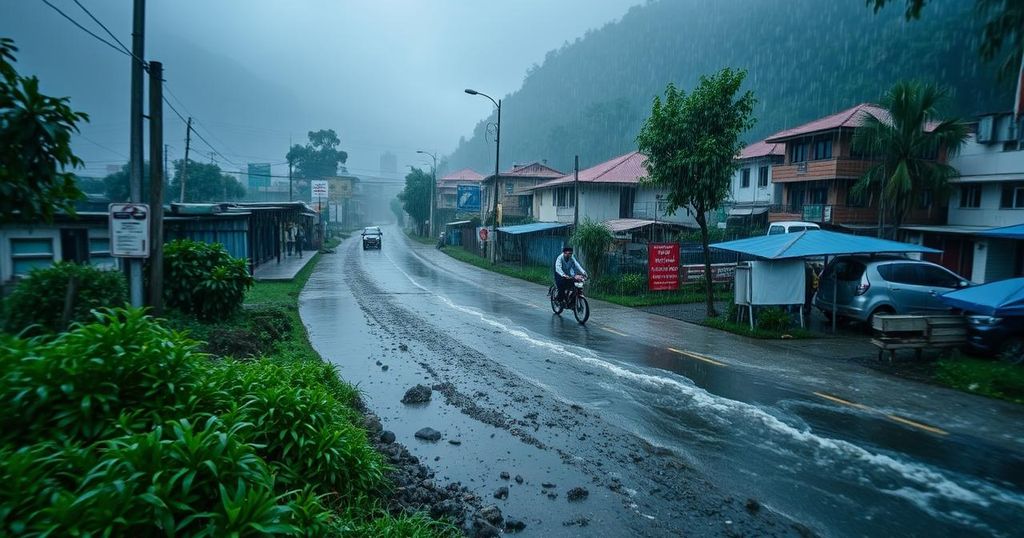Intensified Flooding in Nepal Attributed to Climate Change, Urges Need for Urban Planning Improvements
A recent report indicated that human-induced climate change made the September floods in Nepal about 10 percent more intense, resulting in over 240 fatalities and significant destruction. The analysis underscores the necessity for improved urban planning and the implementation of early warning systems to protect at-risk populations from future flooding events.
A recent analysis by World Weather Attribution (WWA) has concluded that human-induced climate change has intensified the late September floods in Nepal by approximately 10 percent. This tragic weather event resulted in the deaths of over 240 individuals and highlighted critical gaps in urban planning and disaster preparedness within Nepali cities. The floods were triggered by three consecutive days of extreme rainfall beginning on September 26, with certain meteorological stations reporting over 320 mm of precipitation on September 28. Such unprecedented downpours led to enormous casualties and extensive damage, particularly in Kathmandu, where the flooding was described by witnesses as unprecedented. The economic toll is estimated to be in the billions of rupees. The WWA, a consortium of leading international scientists, emphasizes the need for Nepal to restrict development in low-lying and riverside areas to safeguard communities from future flooding risks. They argued that urbanization, especially in flood-prone areas like the Kathmandu valley, exacerbated the impacts of these climate-driven events. Moreover, they recommended advancing early warning systems and implementing proactive measures to mitigate the chances of future disasters. The study involved 20 researchers from various global institutions and is part of a broader effort to assess the link between climate change and extreme weather events across Asia. Experts like Mariam Zachariah of the Centre for Environmental Policy at Imperial College London affirmed, “If the atmosphere wasn’t overloaded with fossil fuel emissions, these floods would have been less intense, less destructive and less deadly.” Meanwhile, Roshan Jha from the Indian Institute of Technology, Bombay, noted, “Clearly, climate change is no longer a distant threat in Asia,” highlighting the tangible consequences of rising global temperatures, including increased precipitation and severe flooding events.
The severe flooding in Nepal during late September 2023 has drawn attention to the impacts of climate change on extreme weather events. It highlights how climate change exacerbates rainfall intensity, increasing the likelihood of destructive flooding in various regions, particularly in vulnerable areas like South Asia. Global warming, primarily due to fossil fuel emissions, increases atmospheric moisture content, resulting in heavier precipitation events, which have tragic implications for communities and infrastructure. Nepal, with its unique geography, is especially susceptible to flooding, particularly in urban areas like Kathmandu, which have experienced rapid urbanization without adequate infrastructure to manage such natural disasters. Understanding the interaction between climate change and urban planning is crucial for mitigating similar disasters in the future.
The findings from the WWA analysis underscore the urgent need for Nepal to adopt comprehensive urban planning strategies to mitigate the effects of climate change on flooding. As climate change continues to escalate extreme weather incidents, it is imperative for local authorities to implement policies that limit development in flood-prone areas, enhance early warning systems, and establish proactive measures to safeguard communities. Without such initiatives, the risks of future catastrophic floods will remain significantly high, further threatening lives and livelihoods.
Original Source: theprint.in




Post Comment